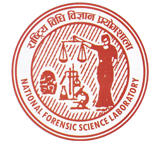- Home
- About Us
- Technical Units
- Examination Fee
-
Publication
-
Syllabus
- Senior Scientific Officer (8th level)
- Senior Administrative Officer (8th level)
- Scientific Officer (7th level)
- Asst. Scientific Officer (6th level)
- Asst. Computer Officer (6th level)
- Asst. Administrative Officer & Account Officer (6th level)
- Scientific Assistant (5th level)
- Computer Operator (5th level)
- Asst. Administrative & Accountant (5th level)
- Asst. Librarian (5th level)
- Lab Technician (4th level)
- Office Asst. & Account Asst. (4th level)
- Gathan Aadesh
- Annual Report
- Articles
- Download
-
Syllabus
- Information Center
- Gallery
- Contact Us
A molecular genetic approach for forensic animal species identification
Previous methods of animal species identification haveutilised morphological characteristics of the sample or macro-molecular analysis such as HPLC analysis of hemoglobin orfatty acid discrimination[3–6]. Application of such protocolshas, however, failed to successfully differentiate closelyrelated species, highlighting the need for a method possessinghigher specificity and sensitivity. Analysis of genetic variationcould potentially provide definitive information regardinganimal species origin.
By analysing three regions within genomic, mitochon-drial DNA (mtDNA) and ribosomal RNA (rRNA) as poten-tial markers of differential DNA sequences, it may bepossible to detect genetic variants that aid in the efficientdiscrimination of species. Due to the minute sample size orsample degradation commonly encountered in forensic sam-ples, rRNA and mtDNA is often used in these type of studiessince individual copy number per cell of these regions areknown to be significantly higher than genomic DNA[7,8].Inaddition, ribosomal RNA is known to possess regions ofvariation between species and was therefore analysed inthese studies to potentially identify species differences.

